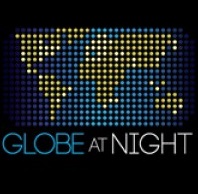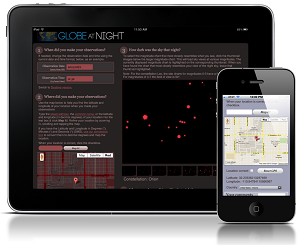| Join the Worldwide Globe at Night 2017 Campaign! |  |
| What would it be like without stars at night? What would we lose? Starry night skies have given us poetry, art, music and the wonder to explore. A bright night sky affects energy consumption, health, and wildlife. The Globe at Night program is an international citizen-science campaign to raise public awareness of the impact of light pollution by inviting citizen scientists to measure their night-sky brightness and submit their observations from a computer or smart phone. Students and scientists use the data to monitor levels of brightness or light pollution around the world. They also use the Globe at Night data to understand light pollution’s effects on energy consumption, plants, wildlife and human health, as well as our ability to enjoy a starry night sky. |
| The 5 Easy Steps to do Globe at Night are listed here www.globeatnight.org/5-steps.php Find the Globe at Night constellation of the month. For April it will be Leo in the northern hemisphere and Crux in the southern hemisphere. In advance of going outside to take measurements, you can view the Globe at Night website to practice finding your constellation in the night sky. Go outside more than an hour after sunset (usually 8pm til 10 pm local time). The Moon should not be up. Let your eyes become used to the dark for 10 minutes before your first observation. |
 |
| The webapp (report page) is accessible on any smart device |
1) Record local date and time. Using the online report page at www.globeatnight.org/webapp, the date and time will be automatically inputted if you are using a smart device. Otherwise record the local time on the online report page or the paper version of the report page in the activity guides at www.globeatnight.org/downloads.
2) Record your location (latitude and longitude) using the interactive tool on the online report page at www.globeatnight.org/webapp/. With a smart cell phone or tablet, the latitude and longitude are automatically determined as you report the observation. If you are reporting it later from your computer, input the address of the observation or input your city. Zoom in/out and pan around until you find the observation location. The latitude and longitude will be displayed.
3) Match your sky to one of our magnitude charts using the online report page at www.globeatnight.org/webapp/ or the paper version (pages 2 & 3). Select and report the chart that most closely resembles what you see.
4) Estimate the cloud cover. Select and report one of the 4 images of cloud illustrations that most closely resembles what you see: clear sky, 25% of sky covered by clouds, 50% covered, or more than 50% covered.
5) Sky Quality Meter measurements are optional. See Unihedron.com for more information on these devices.
Compare your observation(s) to others from all over the world. Check back at www.globeatnight.org/map/ almost immediately to view the map of measurements.
For more information and details on how to participate, visit Globe at Night.
Share your experiences with the world on the GAM Facebook page or Globe at Night Facebook page Tweet using #GAM2017. Follow @gam_awb and @GlobeAtNight.








